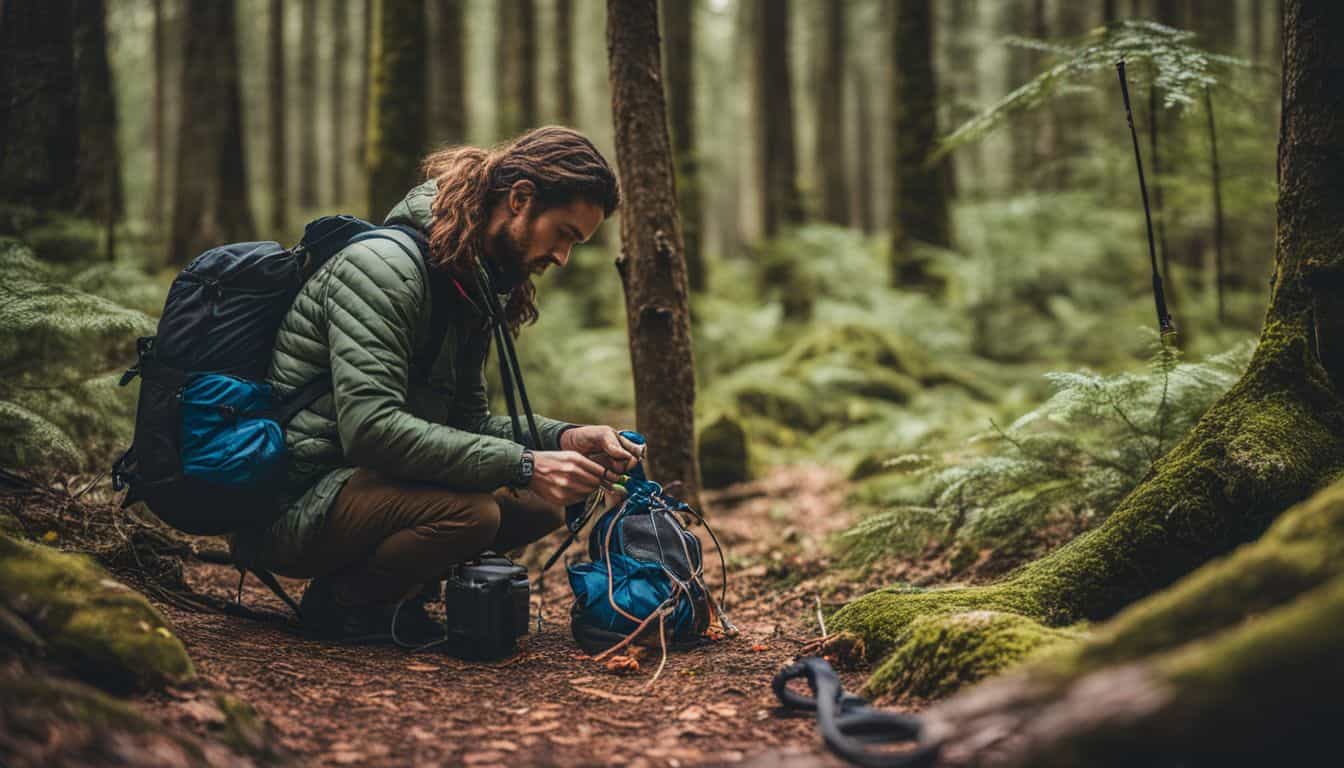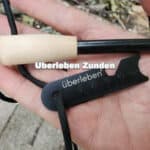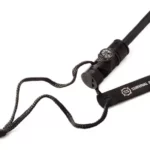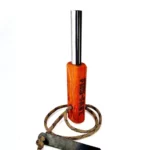Knowing how to tie a good knot can mean the difference between safety and danger in any survival situation. Knot tying is an ancient skill that remains critical for emergency preparedness today.
Our blog will guide you through essential knots to master, ensuring you’re equipped for any challenge nature throws your way. Stay with us to learn lifesaving loops and bends!
Table of Contents
- Understanding the Basics of Knot Tying
- Essential Survival Knots
- Bowline Knot: Use and How to Tie
- Double Sheet Bend: Use and How to Tie
- Halter Hitch: Use and How to Tie
- Trucker’s Hitch: Use and How to Tie
- Alpine Butterfly Knot: Use and How to Tie
- Double Fisherman’s Knot: Use and How to Tie
- Prusik Hitch: Use and How to Tie
- Munter Hitch: Use and How to Tie
- Clove Hitch: Use and How to Tie
- Common Use Cases for All the Essential Knots
- Importance of Practice in Knot Tying
- Conclusion
- How can knot tying skills be useful in everyday survival situations?
- Comparison Chart of the Essential Knots
- FAQs
- Why is learning different knots like the prusik knot and bowline important for survival?
- What are some essential knots to use when setting up camp?
- How do I tie a knot that won’t slip under pressure?
- Are there any quick-release knots that could be useful in an emergency?
- Can I use my shoelaces if I need rope in an emergency situation?
Key Takeaways
- Knot tying is a critical survival skill used in many situations, including constructing shelters, securing gear, and emergency rescues.
- Essential knots include the Bowline for creating non-slipping loops, the Double Sheet Bend for joining ropes of different thicknesses, and the Trucker’s Hitch for securing loads with adjustable tension.
- Learning knot terminology like “working end,” “standing part,” “bights,” and “turns” helps in understanding how to tie effective knots.
- Dressing a knot properly — adjusting it so it lays flat without overlaps or twists — adds strength to the knot and ensures it performs its intended task safely.
- Regular practice with various types of knots equips you with reliable skills for effectively tackling unpredictable outdoor challenges.
Understanding the Basics of Knot Tying
Mastering the art of knot tying is a cornerstone skill for any survival scenario, providing a sturdy foundation for everything from constructing shelters to securing gear. Delve into the core principles and terminology that will empower you to manipulate ropes and lines with precision and confidence.
Knot Basics and Lingo
To tie knots effectively, it’s important to understand the terms experts use. A rope’s “working end” is the part you’ll manipulate to create the knot, while the “standing end” is stationary and often takes on most of the load.
Words like loops, bights, and turns describe shapes made with the rope during knotting – essential building blocks for simple and complex patterns.
Familiarity with these basics transforms complicated diagrams into clear steps. You can form a variety of survival knots using just these simple elements combined in different ways.
For instance, an overhand loop becomes easy when you know it involves twisting the working end over itself. Learning this lingo bridges the gap between confusion and competence in confidently securing everything from shelters to climbing gear.
Parts of a Line
In the world of knot tying, every line has three fundamental parts: the working end, the standing part, and the body. The working end is where all knots and hitches start; it’s your active tool for creating loops, turns, and knots.
Grip this section to maneuver and shape your cordage into useful configurations. Moving along a rope, you’ll find the standing part—this is essentially the main length that often bears weight or maintains tension in a system.
It remains relatively stable during the knot-tying process.
The third segment is known as the body, or sometimes called ‘the bight.’ This is any curved section between the two ends of your rope or cordage without crossing itself. Bights create foundational structures like loops that are integral in many types of knots, from bowlines to clove hitches.
Mastering these core components ensures each knot serves its intended purpose, whether securing a boat mooring line or constructing an emergency shelter in survival situations. Knots fail if improperly formed; thus, understanding each part helps maintain safety and effectiveness when life depends on reliable ropework skills.
Underhand vs. Overhand Loops
Moving from the various parts of a line, it’s important to know the different loops that can be created with your rope or cord. Underhand loops are a favorite among campers and fishers due to their secure hold; they minimize slipping.
These loops wrap around the standing end in such a way that tightens under strain, which is why anglers trust them to keep hooks in place.
On the flip side, overhand loops stand out for their simplicity. They might not be as secure as underhand ones, but they win points for being easier to tie and untie—ideal for situations where quick release is more beneficial than an unyielding grip.
Selecting between an underhand or overhand loop comes down to assessing what’s needed: security or speed? This decision is critical in outdoor activities, where knot efficiency can make all the difference.
Bights, Turns, and Tails
Bight, turns, and tails may sound like nautical terms from an old sailor’s tale, but they play a crucial role in the art of knot tying. A bight is simply a curve or loop created in the rope without crossing itself—a fundamental step in many knots.
It acts as the foundation for building complex knots needed for survival or tasks at hand.
Applying turns introduces additional security to your knot. Think of a turn as wrapping the rope around an object, such as a tree or pole, which adds friction and can prevent slipping under tension.
Finally, the tail refers to the end part of your cord that isn’t involved in the main structure of your knot; it’s often used to finish off knots safely so they don’t come undone unexpectedly.
Whether securing shelter with webbing or tying down equipment using cords—understanding these components ensures each knot serves its purpose effectively.
Dressing
Dressing a knot correctly can make all the difference between a secure hold and a failed tie. It means adjusting the knot so it lays flat, without any overlaps or twists that could weaken its structure.
Think of it like organizing ropes in clean lines and snug turns—it’s about giving your knot the best chance to do its job effectively.
To dress a knot properly, pull on the different parts slowly to tighten them uniformly. A well-dressed knot is stronger and less likely to slip under strain or capsize under changing loads.
This technique ensures maximum efficiency and makes untying easier when it’s time to undo your work. Always double-check your knots after dressing; this small step is essential for reliability in any survival scenario or first aid situation where every second counts.
Essential Survival Knots

In the realm of survival, mastering a few essential knots can make all the difference between success and failure. Whether securing shelter, hoisting food away from wildlife, or ensuring safety during a climb, these versatile configurations are your lifeline in the unpredictable embrace of nature.
Bowline Knot: Use and How to Tie
The Bowline knot is a cornerstone of survival skills, offering a non-slipping loop critical in various rescue and anchoring scenarios. With its essential place in wilderness survival, learning the Bowline knot is a smart move for anyone venturing outdoors.
- Begin by laying the rope on a flat surface.
- Make a small overhand loop near the end of your line—this is known as the “rabbit hole.”
- Picture the end of your rope as a “rabbit.” Bring it up through the rabbit hole from underneath.
- Now, take your rabbit around the tree (the standing part of your rope), moving behind it.
- It’s time for your rabbit to go back down into the rabbit hole.
- Hold onto both parts of the rabbit—the tail you’ve been weaving and its original standing line—and pull them in opposite directions.
- As you’re pulling, slide up to where your initial loop or ‘rabbit hole’ was formed, and hold that intersection tightly with one hand.
- With your other hand, keep pulling on the rabbit’s tail until there’s no more slack and your knot forms properly. This process is called “dressing” the knot to ensure it’s tidy and strong.
- Double-check that your Bowline has a fixed loop that doesn’t slip or move when tugged on hard – this confirms you’ve done it right.
- Practice this method frequently so tying this knot becomes second nature to you.
Double Sheet Bend: Use and How to Tie
Understanding how to tie a Double Sheet Bend is crucial for survivalists and outdoor adventurers. It connects two ropes, even of different thicknesses, providing a strong hold when done properly.
- Start with the thicker or more used rope; make a bight (a simple U-shaped bend) near its end.
- Hold the bight open with one hand while you grab the end of the other rope with your other hand.
- Pass the second rope’s end through the first rope’s bight from beneath.
- Wrap the tail of this second rope around both parts of the first rope’s bight that are emerging from the loop.
- Continue by bringing the tail back over itself and then tucking it under its standing part after it has wrapped around both parts of the bight.
- Pull both ends of the second rope while holding onto the first rope’s bight to tighten.
- Ensure that all parts lie neatly against each other; this is called dressing the knot.
Halter Hitch: Use and How to Tie
Moving from the versatile Double Sheet Bend, we transition to the practicality of the Halter Hitch. This knot excels at securing animals or forming an impromptu harness. Here’s how to tie a Halter Hitch:
- Begin by choosing a sturdy post or tree for your hitch. Ensure it’s solid enough to hold whatever you’re tying.
- Take your rope and pass it around the object. This creates what is known as the ‘standing part’, which will bear most of the load.
- Form a loop by crossing the working end over the standing part, bringing it back towards you.
- Pass the working end behind the standing part, creating a second loop alongside the first one; this is essential in building the structure of your hitch.
- Now thread the working end through this second loop coming from behind and pull it all way through until snug.
- For additional security, create a half-hitch with the working end around itself and tighten everything up neatly.
Trucker’s Hitch: Use and How to Tie
Mastering the Trucker’s Hitch can be a real game-changer when you must securely cinch down a load. This knot provides mechanical advantage and adjustable tension, making it ideal for survival scenarios.
- Begin by tying an overhand loop midway along the length of your rope, which will act as your pulley point.
- Pull the free end or ‘working end’ of the rope through this loop to create a simple slip knot, being sure not to tighten it completely yet.
- Lead the working end around your anchor point—this might be a tree, rock, or any sturdy object—and back towards the loop.
- Thread the free end through the loop you created initially, pulling tight to create significant tension across the line.
- Secure your tensioned line by tying one or more half hitches below your slip knot with the remaining working end of the rope to lock everything in place.
- Add another half hitch on top of the previous ones for extra security and to ensure your load stays put.
- Finally, tug firmly on all knot parts to ensure they’re tight and well-seated.
Alpine Butterfly Knot: Use and How to Tie
The Alpine Butterfly Knot excels in creating a secure loop in the middle of a rope. Climbers, rescuers, and outdoor enthusiasts rely on it for its strength and ease of untying.
- Lay the rope across your open palm.
- Make a twist by rotating the rope on your hand, forming an “X.”
- Add another twist atop the first one to create two overlapping loops.
- Reach under these loops to grab the strand that rests against your palm.
- Pull this strand out slightly to form a new loop.
- Carefully lift this new loop through the opening between the original twists.
- Hold onto this new loop with one hand; use your other hand to gently pull on both ends of the rope concurrently.
- As you tighten, adjust the knot by pulling on each part until it forms a symmetrical butterfly shape.
Double Fisherman’s Knot: Use and How to Tie
Tying a Double Fisherman’s Knot creates a strong link between two ropes of the same diameter. Its resistance to slipping makes it invaluable for rock climbing, sailing, and survival needs.
- Lay the ends of the two ropes side by side, going in opposite directions.
- Pick up one end and tie an overhand knot around the other rope; make sure it’s snug against the rope’s body.
- Ensure this first overhand knot is tight and close to the standing part of its rope for maximum strength.
- Take the opposite end of the other rope and repeat this process, tying an overhand knot around the first rope.
- Pull both ends so that each overhand knot slides toward each other until they’re tightly pressed together.
- Check both knots separately to ensure their integrity before tightening them against each other.
- Test your completed Double Fisherman’s Knot by pulling on both standing parts simultaneously. The knots should lock firmly in place without any give.
Prusik Hitch: Use and How to Tie
The Prusik Hitch shines in situations where you need a knot that slides when not under load but holds tight once tension is applied. This knot proves indispensable for climbers and rescuers, offering reliability in ascents or emergencies.
- Start with a loop of cord; a prusik cord or accessory cord works well for this.
- Wrap the loop around your main rope at least three times, maintaining neat coils for better grip.
- Ensure each wrap lies cleanly beside the previous one without overlapping.
- After wrapping, pass the end of your loop through the original loop you started with.
- Pull on both ends of your loop to tighten up the wraps against the main line.
- Adjust the hitch by sliding it to your desired position along the rope while it’s not under load.
- Apply weight to test that your hitch grips properly and holds in place when loaded.
- Practice tying this versatile hitch until you can set it up confidently under various conditions.
Munter Hitch: Use and How to Tie
Moving from the friction hold of the Prusik Hitch, we transition to the Munter Hitch, a knot of great versatility and importance in survival scenarios. It provides a reliable solution for belaying, rappelling, and creating hauling systems.
- Identify an object suitable for tying the hitch around, such as a carabiner or a sturdy branch.
- Grab your rope and create a loop; make sure you have enough length to work with.
- Place the loop over your chosen object—this forms the base of your Munter Hitch.
- Cross the rope’s working end over itself to form an X shape beneath the object.
- Take the tail end and pass it through this X shape, which creates another loop.
- Ensure that both loops lie neatly alongside each other without twists or overlaps. This step is crucial for dressing the knot correctly.
- Pull on both ends of the rope to tighten everything up. The friction between loops will secure your Munter Hitch in place.
- Double-check that all parts are snug and properly aligned; safety hinges on attention to detail here.
Clove Hitch: Use and How to Tie
Transitioning from the versatile Munter Hitch, we now explore the Clove Hitch, a fundamental knot with specific applications. Ideal for securing ropes to poles or trees, this knot is an integral part of your survival skills toolkit.
- Begin by looping the rope around your chosen object, such as a post or branch.
- Cross the tail end over the rope’s standing part to form an “X” on the outside.
- Bring the tail end around the object again, creating a second loop that mirrors the first.
- Tuck the tail end underneath itself as it comes out of this second loop.
- Pull both ends of the rope in opposite directions to tighten and secure your Clove Hitch.
- Ensure that each wrap is snug against the object to maintain stability.
- Dressing is crucial; adjust your wraps so they lie neatly without crossing over incorrectly.
- The Clove Hitch can be unreliable on square or rectangular posts due to its propensity to slip under pressure.
- It excels at midline tool attachment when climbing or rigging, making it great for organizing gear without needing access to rope ends.
- Use it with caution in critical situations; do not rely on it if consistent load-bearing strength is required.
- Note that this hitch might become difficult to untie once weighted when dealing with smaller diameter cords.
Common Use Cases for All the Essential Knots
Each knot has specific strengths and typical use cases. Here’s an overview of when to employ these essential knots:
- Bowline Knot: Used to create a fixed loop at the end of a rope. Commonly used for securing a mooring line to a ring or post, connecting two ropes, or tying a rope around an object. Easy to untie after being loaded.
- Double Sheet Bend: Ideal for joining two ropes of different diameters or materials. Often used by weavers for repairing broken warp threads. Also employed in fishing and netting. More secure than a single sheet bend.
- Halter Hitch: Used for tethering and tying animals, like securing a horse’s lead rope to a post. The benefit is it can be quickly released under tension with a tug of the free end.
- Trucker’s Hitch: Used to secure loads on trucks or trailers. Creates a mechanical advantage, allowing the line to be pulled very tight. Useful for tying down tarps or cargo.
- Alpine Butterfly Knot: Creates a secure loop in the middle of a rope. Used by climbers as an attachment point, to isolate a damaged section of rope, or to tie in the middle climber on a rope team. Can be loaded in any direction.
- Double Fisherman’s Knot: Used to join two ropes of equal diameter. Popular with climbers and mountaineers for tying two ropes together. Forms a secure, non-jamming bend.
- Prusik Hitch: A friction hitch that can slide on another rope when loose but locks under tension. Used by climbers as an ascending knot or for creating an adjustable tether.
- Munter Hitch: Provides friction when belaying. Can be used to control the descent of a load or to belay a climber if no belay device is available.
- Clove Hitch: A quick and simple way to secure a rope to a pole or post. Often used to start and finish lashings. Also used to secure fenders on boats.
By understanding the strengths and common applications of each knot, you can choose the right one for the job at hand. Mastery of these essential knots will prepare you for a wide range of rigging and tethering needs.
Importance of Practice in Knot Tying
Consistent practice in knot tying sharpens your skills, so they become second nature. This is especially vital in emergencies when there’s no time to fumble with ropes and cords. Imagine securing a tarp during a storm or quickly fashioning a sturdy splint for an injured limb; in these moments, having knots at the ready can make all the difference between comfort and distress or even survival and peril.
Knowing how to tie a bowline on a bight swiftly or create an effective prusik hitch gives you confidence in your abilities. Whether securing your gear with square lashing, joining two lines with a carrick bend, or using clove hitch knots for anchoring purposes, repeated practice ensures that you can perform these tasks effortlessly under pressure.
Mastery of critical knots such as the taut-line hitch and timber hitch could save precious time when constructing shelters or hoisting food away from wildlife.
Developing muscle memory through repetition means that even if panic sets in, your hands will remember what to do. As you hone your craft by practicing various square knots and reef knots, you build dexterity and mental resilience against stress – both invaluable traits for any survivalist.
Conclusion
Mastering the art of knot tying is a pillar of preparedness for any survival situation. It empowers you to adapt, secure gear, and ensure safety with just a simple length of rope.
Dive into practice; let your fingers become familiar with each twist and loop. The confidence in your knots could one day turn a perilous scenario into a story of triumph. Remember, in the world of survival, your best tool is knowledge wrapped around agility and resilience.
How can knot tying skills be useful in everyday survival situations?
Knot tying skills are essential for survival situations. Knowing how to securely fasten ropes can help in creating shelters, securing food, and even in first-aid situations. Practical tips for survival gear integration include learning different knots like the square knot, clove hitch, and bowline, which can be invaluable in the wild.
Comparison Chart of the Essential Knots
| Knot Name | Type | Main Uses | Difficulty |
|---|---|---|---|
| Bowline Knot | Loop | Securing mooring lines, connecting ropes, tying around objects | Easy |
| Double Sheet Bend | Bend | Joining ropes of different diameters or materials, weaving, fishing | Moderate |
| Halter Hitch | Hitch | Tethering and tying animals, quick-release knot | Easy |
| Trucker’s Hitch | Hitch | Securing loads on trucks or trailers, tying down tarps or cargo | Moderate |
| Alpine Butterfly Knot | Loop | Climbing attachment point, isolating damaged rope sections, tying in middle climber | Moderate |
| Double Fisherman’s Knot | Bend | Joining two ropes of equal diameter, climbing and mountaineering | Easy |
| Prusik Hitch | Friction Hitch | Ascending rope, adjustable tether, climbing | Moderate |
| Munter Hitch | Friction Hitch | Belaying, controlling descent of a load, improvised belay device | Easy |
| Clove Hitch | Hitch | Securing rope to a pole or post, starting and finishing lashings, tying fenders on boats | Easy |
This chart provides a quick reference for comparing the key attributes and common uses of each knot. The “Type” column classifies each knot as a loop, bend (joins two ropes), hitch (attaches a rope to an object), or friction hitch (grips another rope). The “Main Uses” column summarizes the most typical applications for each knot. The “Difficulty” column gives a rough indication of how challenging each knot is to learn and tie.
Keep in mind that this chart is a simplified overview and that many of these knots have additional variations and use cases beyond what’s listed here. The best way to develop proficiency is through hands-on practice and experience using these knots in real-world situations.
FAQs
Why is learning different knots like the prusik knot and bowline important for survival?
Knowing a variety of knots, such as the prusik knot for climbing or the sturdy bowline for rescue situations, equips you with valuable skills to manage unpredictable challenges in the wild.
What are some essential knots to use when setting up camp?
The taut line hitch is perfect for securing tent lines, while tripod lashing can be used to construct stable structures from branches.
How do I tie a knot that won’t slip under pressure?
You can rely on the zeppelin bend or rolling hitch for connections that need to hold firm without slipping, even when they’re being pulled tightly.
Are there any quick-release knots that could be useful in an emergency?
Yes, having knowledge of quick-release knots like a slipped loop or sheepshank might save precious time when you need to release a rope swiftly and safely during emergencies.
Can I use my shoelaces if I need rope in an emergency situation?
Absolutely! Your shoelaces can serve as makeshift ropes; try tying them with carrick bends or wagon knots for strength and reliability in critical moments.






















Leave a Reply